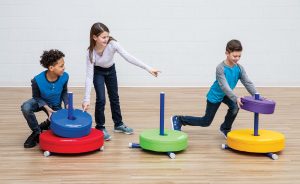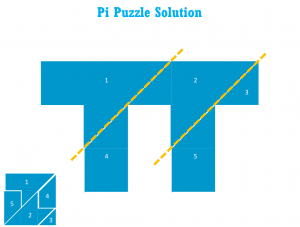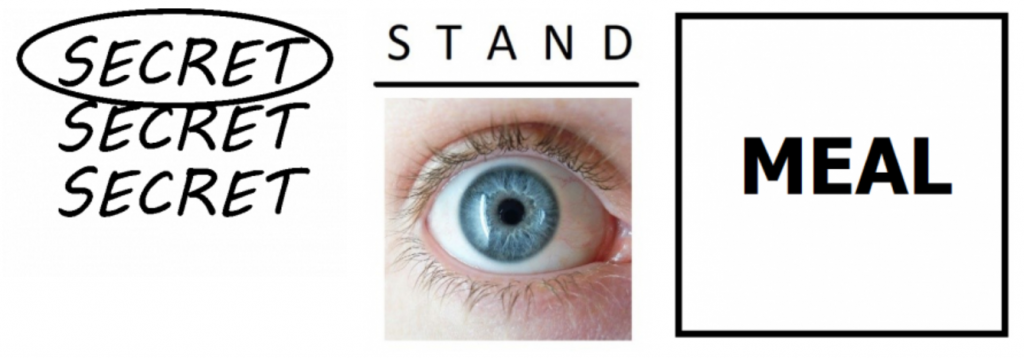I love a good puzzle. They’re a great way to kill time, especially while staying at home! But what I also love about puzzles is how challenging they are and the workout they give my brain. Doing puzzles builds great skills, like spatial reasoning (have you ever tried rotating a piece a hundred times to make it fit?) and sequencing (if I put this here, what comes next?). In fact, most puzzles involve geometry, logic, and mathematical equations, making them perfect STEM activities. Try these five STEM puzzles at home or in the classroom!
1. Tower of Hanoi
The Tower of Hanoi is a mathematical puzzle involving moving discs from one peg to another to recreate the initial stack. Each disc is a different size and you arrange them into a stack from largest on the bottom to smallest on the top. The rules are simple:
- Only move one disc at a time.
- You can never place a larger disc on top of a smaller disc.
- Each move involves moving a disc from on peg to another.

This game involves a lot of complex mathematics in a really simple way. The minimum number of moves (m) can be solved with a simple math equation: m = 2n – 1. The n in this equation is the number of discs.
For example, if you have a tower with 3 discs, the minimum number of moves to solve this puzzle is 23 – 1 = 8 – 1 = 7.
Have students calculate the minimum number of moves based on the number of discs and challenge them to solve the puzzle in that few moves. It gets exponentially harder with the more discs you add!
Don’t have this puzzle at home? Don’t worry! You can play online here. And when you return to school, check out this life-sized version for the classroom that keeps kids active while solving math problems!

2. Tangrams
Tangrams are a classic puzzle consisting of seven flat shapes which can be put together to form larger, more complex shapes. The objective is to form the new shape using all seven smaller shapes, which cannot overlap. This puzzle has been around for hundreds of years, and for good reason! It helps to teach spatial reasoning, geometry, sequencing, and logic – all great STEM skills.


To do this puzzle at home, cut out the shapes using the template attached. Challenge students first to create the square using all seven shapes. Once they’ve mastered this, try making other shapes like a fox or a sailboat. Remember to always use all seven pieces and never overlap them!
No printer at home? No problem! Try these GianTangrams which include oversized tangram shapes, lesson directions, and 24 shape cards.

3. Pi Puzzle
Everybody loves pi, and I’m not just talking about the dessert! Pi is a fundamental number used in myriad mathematical applications and in STEM fields from physics to engineering. The history of pi is fascinating, and kids come in contact with this magical number early on with Pi Day celebrations at school. So why not bring those celebrations home? This pi puzzle is like tangrams, in that you have a bunch of small shapes that come together to make another object. Print out this puzzle, cut out the shapes, and have students reassemble them to make the symbol for pi.

4. Rebus Puzzles
Rebus puzzles are illustrated word puzzles that combine images or specific letter placement to represent a common phrase. These puzzles are a great way to combine literacy into STEM activities. Additionally, students can illustrate their own Rebus puzzle making this a great STEAM activity too! Here are some Rebus puzzles that you can try at home:

Solutions from left to right: top-secret, I understand, and a square meal. Challenge your students to solve these and then make their own!
5. Five Field Kono
This one might be less of a puzzle and more of a game, but it’s a fun chance to exercise geometry and strategy. This Korean game is similar to Chinese Checkers but can be played with household items. The object is to get all your pieces to the opposite side before your opponent does, like checkers. Here are the rules:
- Can only move diagonally.
- Can move backward and forward.
- Cannot jump a piece over another piece.
To play this at home, print out the game board template. Then gather pieces and place them on the board. I recommend pony beads, but other small shapes like paperclips, pasta noodles, pawns, or whatever else you have on hand is fine. Check out this video to see a game in action!
What other puzzles or games are you playing at home?








Leave A Comment